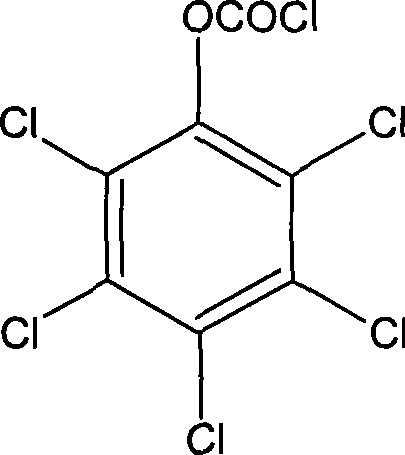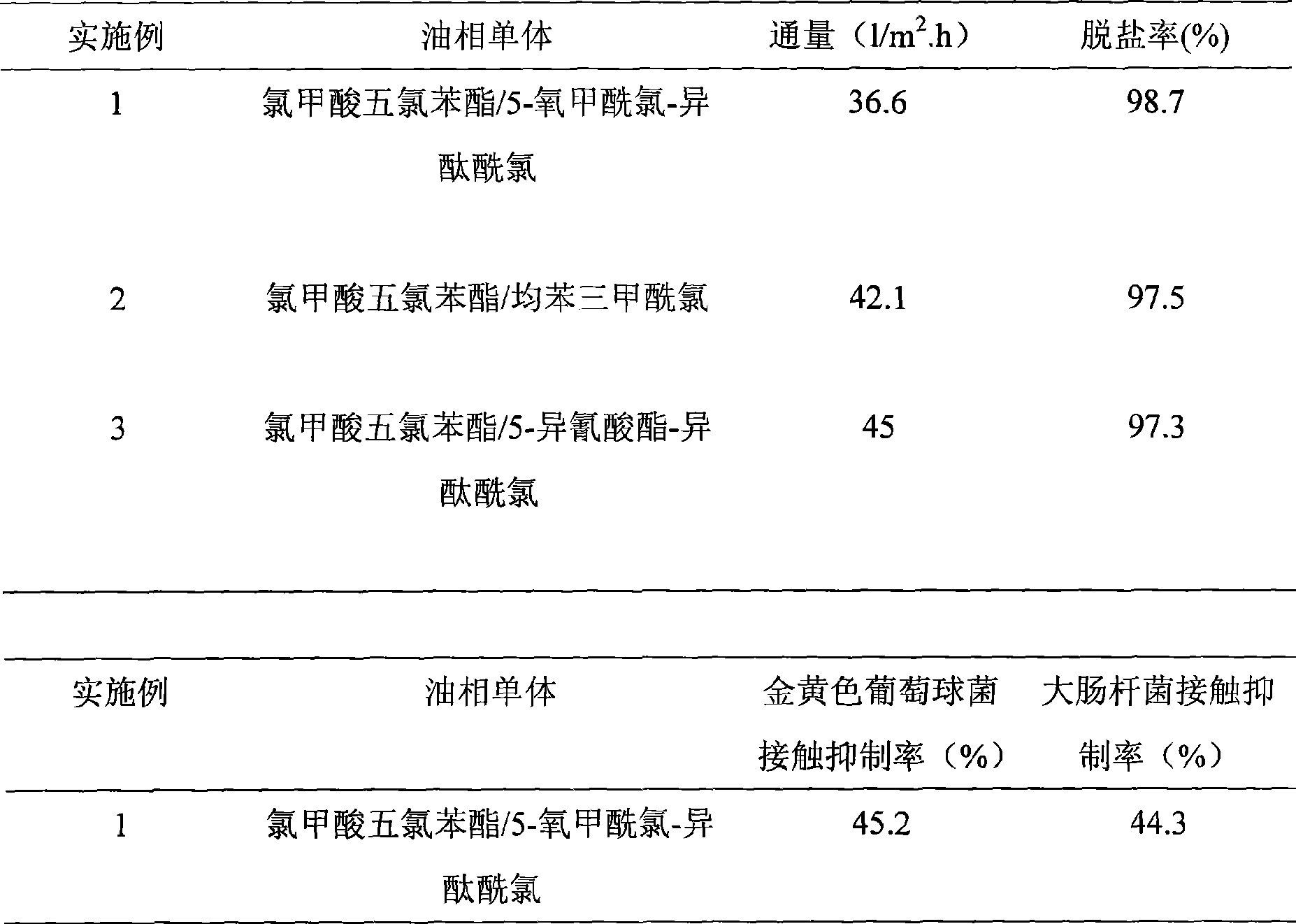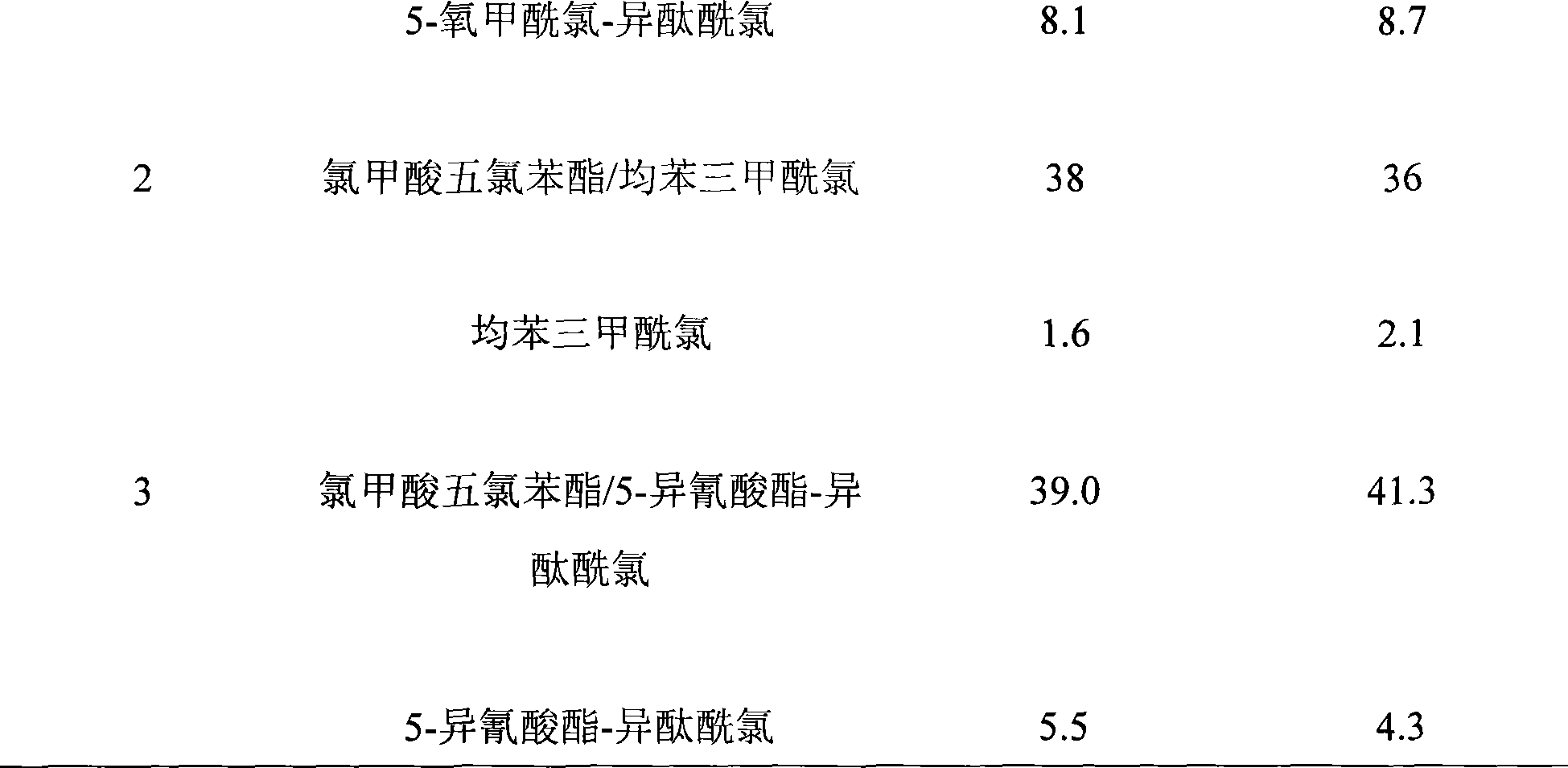Novel biological contamination-resistant ultrathin compound film and preparation method thereof
A bio-resistant and composite membrane technology, which is applied in chemical instruments and methods, membrane technology, semi-permeable membrane separation, etc., can solve the problems such as the difficulty of obtaining p-benzenetriamine, achieve good antibacterial effect, high desalination performance, and convenient preparation Effect
- Summary
- Abstract
- Description
- Claims
- Application Information
AI Technical Summary
Problems solved by technology
Method used
Image
Examples
Embodiment 1
[0025] Use 16% Udel P3500 polysulfone, 0.3% water and 0.1% nonylphenol polyoxyethyl ester phosphate dissolved in N,N-dimethylformamide, scrape on the polyester non-woven fabric, and then dip into After the solvent is removed from the water, a support membrane with a molecular weight cut-off of 20,000-30,000 is obtained, which is stored in a wet state for future use.
[0026] Immerse one side of the wet polysulfone support membrane in an aqueous solution with a weight ratio of m-phenylenediamine of 2% for 2 minutes, roll the surface of the support membrane with a rubber roller and squeeze it dry, and mix it with pentachlorophenyl chloroformate and 5-oxygen Formyl chloride-isophthaloyl chloride mixed in a weight ratio of 1:5, and a 0.12% by weight cyclohexane solution was contacted on one side to carry out interfacial polymerization for 30 seconds. The composite film was dried in the air for 2 minutes, and then treated at 40°C for 3 minutes. Then carry out two steps of rinsing ...
Embodiment 2
[0028] Use 16% Udel P3500 polysulfone, 0.3% water and 0.1% nonylphenol polyoxyethyl ester phosphate dissolved in N,N-dimethylformamide, scrape on the polyester non-woven fabric, and then dip into After the solvent is removed from the water, a support membrane with a molecular weight cut-off of 20,000-30,000 is obtained, which is stored in a wet state for future use.
[0029] Immerse one side of the wet polysulfone support membrane in an aqueous solution with a weight ratio of m-phenylenediamine of 2% for 4 minutes, roll the surface of the support membrane with a rubber roller and squeeze it dry, and mix it with pentachlorophenyl chloroformate and trimesin The weight ratio of acid chloride mixing is 1:5, and the cyclohexane solution with 0.12% by weight is contacted on one side to carry out interfacial polymerization reaction for 20 seconds. The composite film was dried in the air for 2 minutes, and then treated at 50°C for 5 minutes. Then carry out two steps of rinsing again:...
Embodiment 3
[0031] Use 16% Udel P3500 polysulfone, 0.3% water and 0.1% nonylphenol polyoxyethyl ester phosphate dissolved in N,N-dimethylformamide, scrape on the polyester non-woven fabric, and then dip into After the solvent is removed from the water, a support membrane with a molecular weight cut-off of 20,000-30,000 is obtained, which is stored in a wet state for future use.
[0032]Immerse one side of the wet polysulfone support membrane in an aqueous solution with a weight ratio of m-phenylenediamine of 2% for 5 minutes, roll the surface of the support membrane with a rubber roller and squeeze it dry, and mix it with pentachlorophenyl chloroformate / 5-oxygen The mixing ratio of formyl chloride-isophthaloyl chloride or trimesoyl chloride or 5-isocyanate-isophthaloyl chloride is 1:5, and the cyclohexane solution with 0.12% by weight is contacted on one side for interfacial polymerization reaction for 40 seconds. The composite film was dried in the air for 2 minutes, and then treated at ...
PUM
 Login to View More
Login to View More Abstract
Description
Claims
Application Information
 Login to View More
Login to View More - Generate Ideas
- Intellectual Property
- Life Sciences
- Materials
- Tech Scout
- Unparalleled Data Quality
- Higher Quality Content
- 60% Fewer Hallucinations
Browse by: Latest US Patents, China's latest patents, Technical Efficacy Thesaurus, Application Domain, Technology Topic, Popular Technical Reports.
© 2025 PatSnap. All rights reserved.Legal|Privacy policy|Modern Slavery Act Transparency Statement|Sitemap|About US| Contact US: help@patsnap.com



